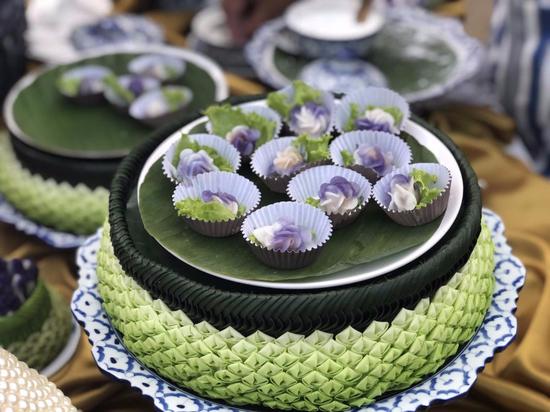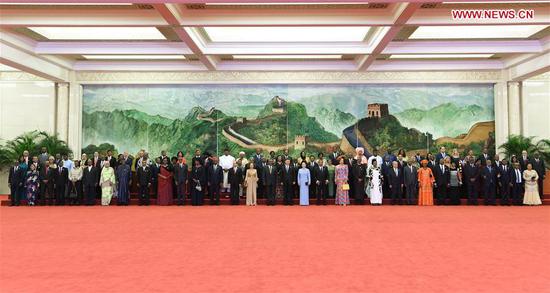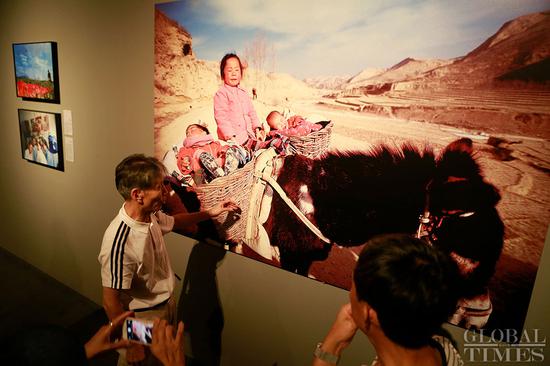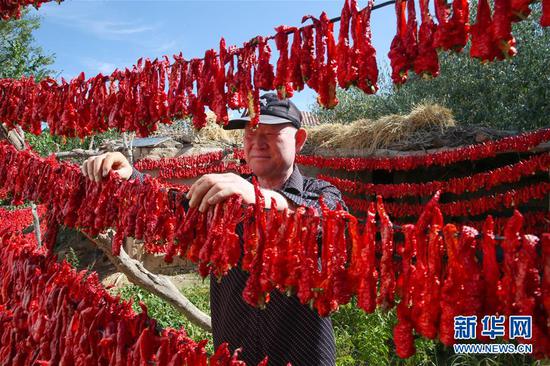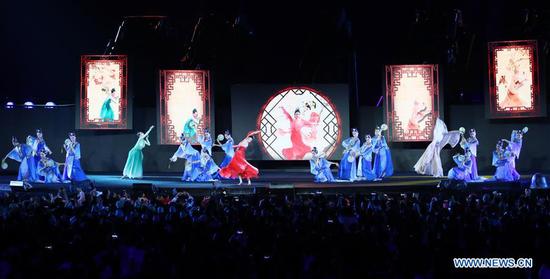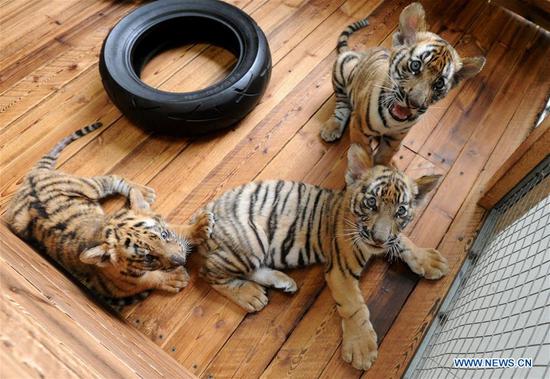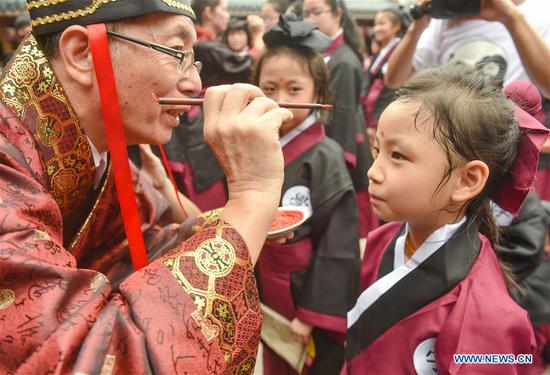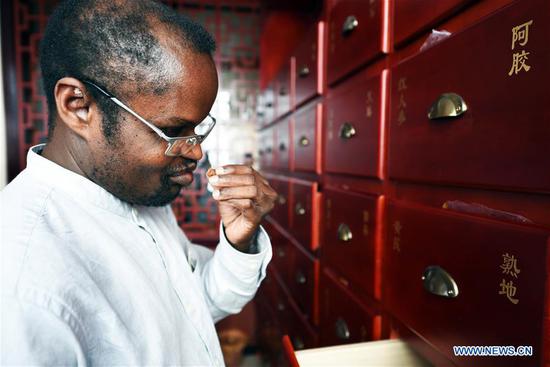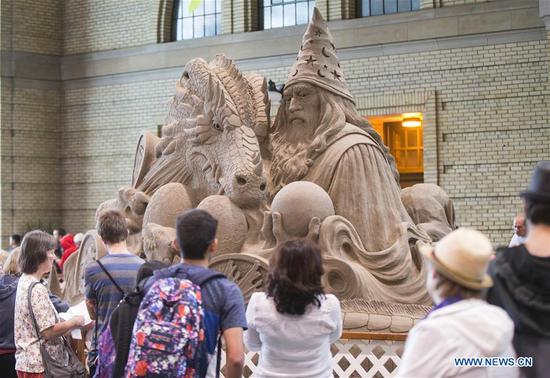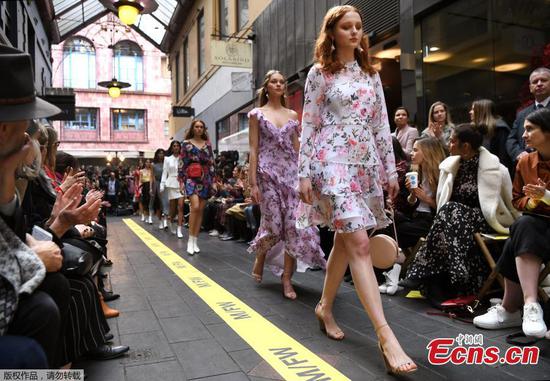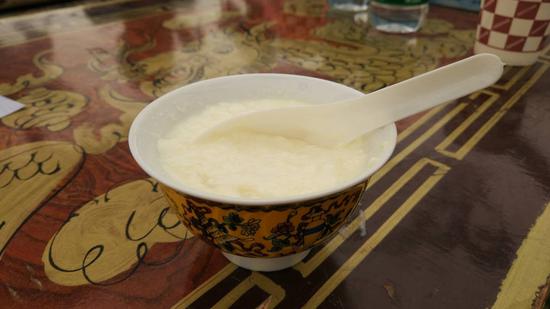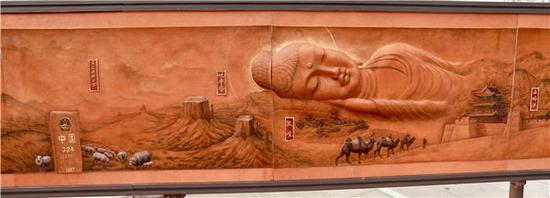
Liu Zao, owner of the Nashici Workshop, introduces Ode to the Silk Road, an 8.8-meter-long leather carving featuring deserts, camels, reclining Buddhas and architectural landmarks, at the opening ceremony of the ancient Silk Road tour in Beijing on Aug 28.(Photo by Zhu Xingxin/China Daily)
Originally a graphic arts student, Jia was drawn to the art form three years ago.
She has been receiving training from leather carving master Cai Honghao, whose work Spring Deer featuring peach blossoms and deer was awarded first place in the best picture category at the World Leather Debut in the United States in 2016.
"A lot can be done with leather of 2-millimeter thickness," Jia says.
Cattle hides are the most common base for creating leather carvings.
It has to be softened by being soaked in vegetable-based tannic acid for over a month before crafting can begin, Jia explains.
After this, the hide would be ready for the range of complex processes necessary to create the artwork - from sketching, rubbing and etching, to carving, dyeing and sewing.
For example, one could use shaping tools to press down certain parts and make other parts stand out by pushing them up from the back and filling the space with powdered leather.
One of the charms of this kind of carving is the natural texture of leather.
Over time, the natural hide darkens, while the areas highlighted with decorative elements such as gold leaf retain their vividness.
The entire work takes on a fine gloss, with certain areas providing an interesting contrast. These, in turn, imbue the carving work with a sense of time, Jia explains.
To date, leather carvings from the Beijing-based Nashici Workshop where Jia works have been sold to North America and Europe.
"Most of our works are tailored for our clients," says Liu Zao, owner of the Nashici Workshop.
Unlike their counterparts in the West, where steel forms are often used to produce leather patterns, the workshop's leather carvings are purely handmade and use the same approach as traditional Chinese painting.
"The graver is our pen," Liu says.
Jia is determined to continue to pursue the ancient art form and hopes to add elements on her own to her work in the future.
"Although leather carving is an ancient technique, it can be integrated into many forms of modern art," Jia says.
Students of painting, sculpture and costume should be able to use their own expertise to create new objects through such carving, she adds.
"For example, my teacher has applied Chinese paintings featuring birds and flowers to leather carving, and my friends have used leather carvings to make clothes."










